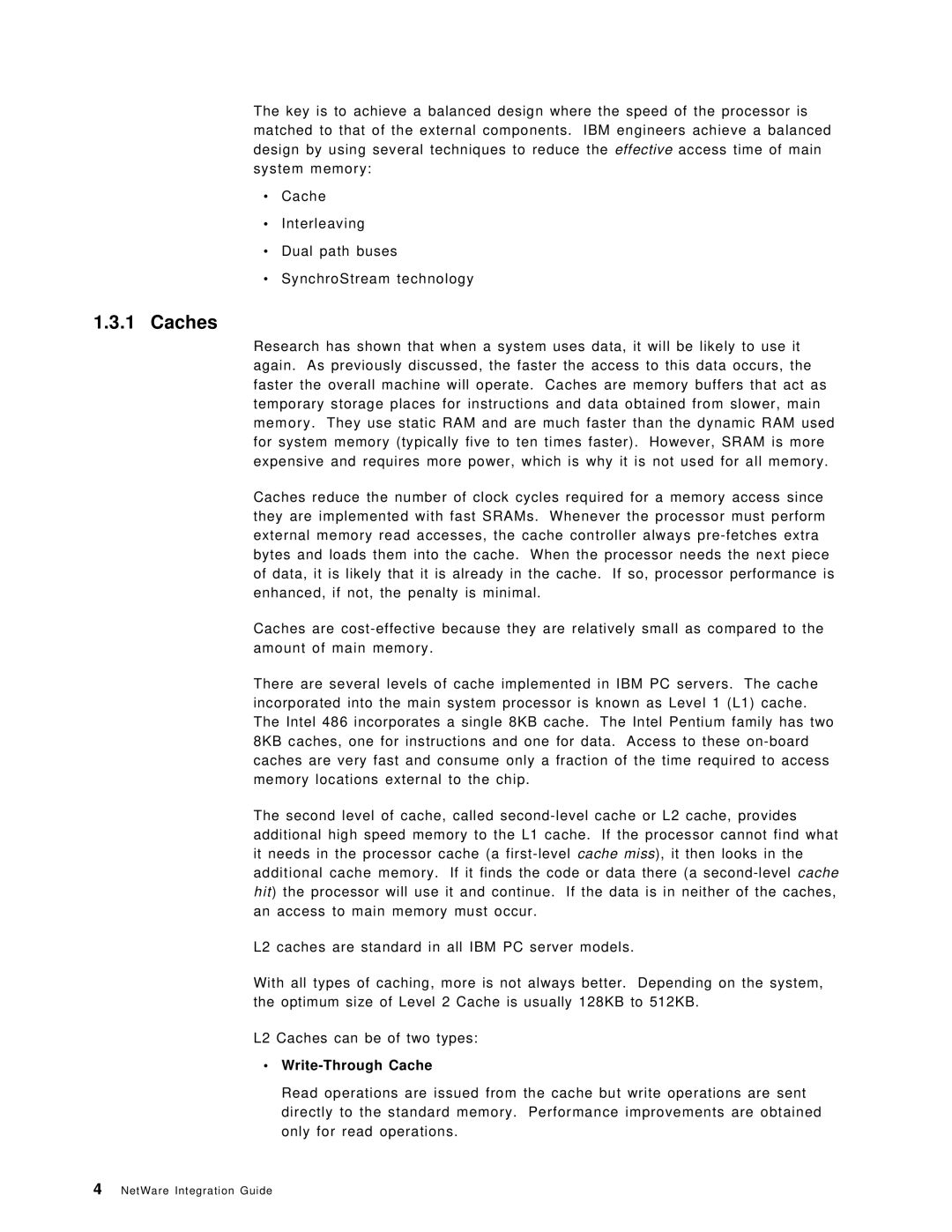The key is to achieve a balanced design where the speed of the processor is matched to that of the external components. IBM engineers achieve a balanced design by using several techniques to reduce the effective access time of main system memory:
∙
∙
∙
∙
Cache
Interleaving
Dual path buses
SynchroStream technology
1.3.1 Caches
Research has shown that when a system uses data, it will be likely to use it again. As previously discussed, the faster the access to this data occurs, the faster the overall machine will operate. Caches are memory buffers that act as temporary storage places for instructions and data obtained from slower, main memory. They use static RAM and are much faster than the dynamic RAM used for system memory (typically five to ten times faster). However, SRAM is more expensive and requires more power, which is why it is not used for all memory.
Caches reduce the number of clock cycles required for a memory access since they are implemented with fast SRAMs. Whenever the processor must perform external memory read accesses, the cache controller always
Caches are
There are several levels of cache implemented in IBM PC servers. The cache incorporated into the main system processor is known as Level 1 (L1) cache. The Intel 486 incorporates a single 8KB cache. The Intel Pentium family has two 8KB caches, one for instructions and one for data. Access to these
The second level of cache, called
L2 caches are standard in all IBM PC server models.
With all types of caching, more is not always better. Depending on the system, the optimum size of Level 2 Cache is usually 128KB to 512KB.
L2 Caches can be of two types:
∙Write-Through Cache
Read operations are issued from the cache but write operations are sent directly to the standard memory. Performance improvements are obtained only for read operations.
4NetWare Integration Guide
